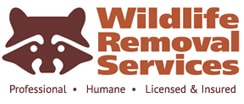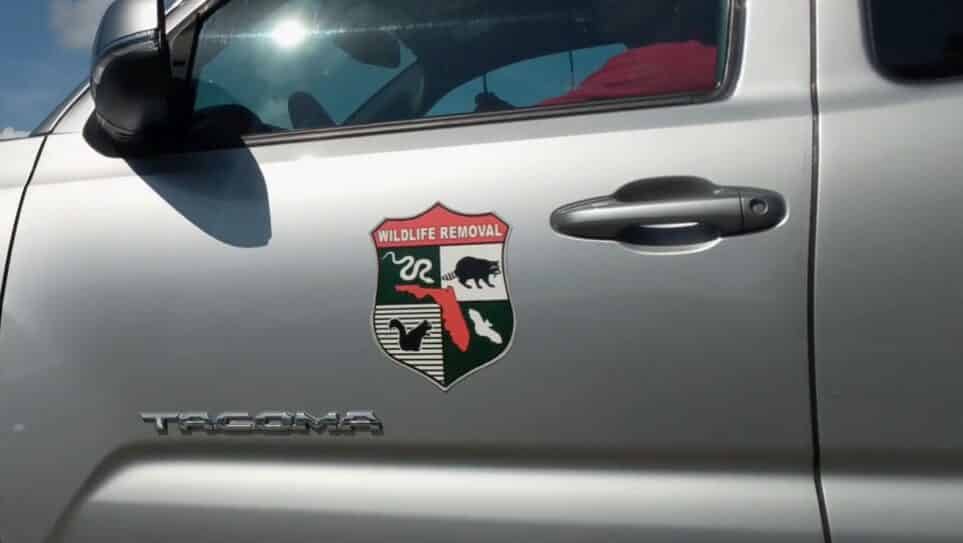Winter Wildlife in South Florida
Bats hibernate to survive the cold winter months. They do so because there are not enough insects flying around in the winter to support their active metabolism. Bat hibernation requires specific temperatures ranging from 35 to 40 degrees Fahrenheit. Big Brown bats have adapted to hibernating in attics rather than cave systems since attics are at the perfect temperature required for their survival.
Raccoons will become less active and den up during the winter, although they will not hibernate completely. Their dens can usually be found in hollow trees, rock crevices, or other animals’ nests. But sometimes they might choose a home’s attic or chimney as their winter den. They are known to intrude on homes at the roofline by the use of downspouts, tree branches, or pushing their way through louvers or soffits, or they might just climb directly up the siding.
Raccoons have also been known to cause damage when trying to create or enlarge entry holes, bend gutters or downspouts, chewing holes in the siding, ripping off shingles and boards, and damaging vent louvers or soffits. A raccoon can tear up insulation and might rip insulation off of pipes or ducts to use for nesting material when they are inside a house. The racoons munching on wires and cause a fire hazard. Dedicated areas in the attic as a latrine and the accumulated urine will cause foul odors and leakage in the ceiling below. Remember to use special precautions before cleaning a raccoon’s latrine.
Squirrels may live in trees without central heating, but they like to snuggle up to something warm during the long winter months like the rest of us. Like a house. It is harder for a squirrel to find nesting material during the winter. Tree leaves that a squirrel uses for constructing a new nest have fallen from the trees. Squirrels will sometimes improvise in finding a new home. They may end up in sheds or barns, old and broken cars or trucks, covered porches, patios, or an attic belonging to a neighbor. A squirrel will often simply settle for squeezing through the louvers that are used to keep the attic cool in summer, or crawling down the chimney.
As winter approaches, rats will be seeking out warmer places to nest; its time to ensure your home is as rat-proof as possible. Trim the trees, check your window screens, vents, doggy doors, any gaps between the floors and doors, and put away fruits and nuts, which is their favorite food. Rats often cause structural damage to your home, they damage insulation in the attic with urine, chew on electrical wires, and they carry a plethora of parasites and diseases. The saliva, droppings, and urine rats leave behind can cause Hantavirus Pulmonary Syndrome (HPS) when inhaled by humans, a rare, but potentially deadly virus.
Choosing a local wildlife control company
If you require a wildlife removal professional, here are some tips in finding one that uses humane, effective practices:
If you have the right information and supplies, you might be able to solve some issues with wildlife on your own. But for more pressing matters, its time to call in a professional. Here is how you can find a company that practices humane and ethical removal.
Ask for an inspection and written estimate
A company would find it difficult to assess and price the job from over the phone, but they should be able to help you understand their services and fees. Any fees for on-site inspection should be applied toward the work that they are contracted for. During the on-site visit, ask the wildlife-removal company to identify:
- The animal(s) within or around the structure
- All of the entry points or any potential entry points the animal can use
- If there are offspring present or not
- How they determined these answers
- Most companies can, and should, provide examples to explain how the animal is using a structure and what should be repaired to ensure the structure is safe from wildlife in the future.
Get the specifics on how they will handle the problem and the animals involved.
Request specific details about how they will handle the intrusion or problem and how they will be treating the animal(s). Will they be killing the animal, and if so, why? Are there any offspring, and will they be abandoned or orphaned? And will their methods resolve the problem for the long-term?
Insist on humane practices
If the nuisance wildlife remain inside the structure, insist on guaranteed eviction/exclusion strategies, such as one-way doors or their removal by hand and reunion of families that will lead to their safe release outside of the structure and back into the wild.
Take measures to prevent the problem from happening again in the future
Make sure that the company provides full services for animal proofing and exclusion that carry a guarantee against reentry for at least one year. Remember that the job is not complete until the identified access points have been found and effectively refitted with exclusion material that will stand up to wildlife in the future.
Be on the lookout for practices and fees that are unethical
Never sign a contract that contains a clause that is open-ended and would allow a company to charge for removal of any and all wildlife that can be trapped on the property. This practice is unethical and will not help solve conflicts in the long-term.
Get referrals from sources you trust
Obtain a referral for a company, a local wildlife rehabilitator, humane society, or animal control agency trusts. Ask these references on how they have concluded that the company can be trusted and will use humane practices. You can also use other customers for reference.
Find out if the company has all the proper licenses and insurance
Request proof in writing that the company complies with federal, state, and local laws and regulations. Make sure that the company has all the required licenses and carries commercial liability insurance.

